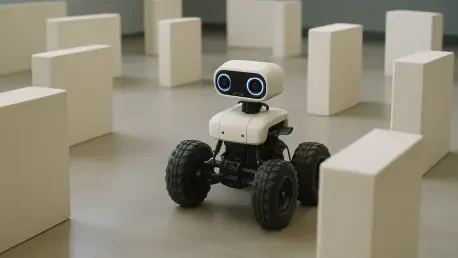I’m thrilled to sit down with Oscar Vail, a renowned technology expert whose pioneering work in robotics, quantum computing, and open-source projects has positioned him at the cutting edge of innovation. Today, we’re diving into his team’s groundbreaking research on robot navigation using Physical AI, a technology inspired by human social behaviors. Our conversation explores how this approach enhances efficiency in autonomous systems, the practical implications for industries like logistics, and the seamless integration of this technology into existing frameworks. Join us as we uncover the future of multi-robot navigation and its potential to transform smart factories and beyond.
How did the idea of incorporating human social behaviors, like the spread and forgetting of information, come about in the context of improving robot navigation?
The inspiration came from observing how humans handle information in social settings. We noticed that people often share critical updates quickly—like a warning about a roadblock—while letting less relevant details fade away over time. My team and I saw an opportunity to model this dynamic in robots to address inefficiencies in navigation. Autonomous robots often get bogged down by outdated or irrelevant data, leading to detours and delays. By mimicking this human trait of filtering and sharing only what’s important, we aimed to create a system where robots could adapt more fluidly to real-world challenges.
Can you explain what Physical AI is and how it sets itself apart from other AI approaches in robotics?
Physical AI is a framework that integrates artificial intelligence with the physical capabilities and constraints of a system, like a robot. Unlike traditional AI, which might focus purely on data processing or decision-making in a virtual space, Physical AI considers the real-world environment and the robot’s physical interactions within it. In our navigation project, this means the AI not only calculates routes but also understands dynamic obstacles and collaborates with other robots in a socially intelligent way. It’s about embedding a deeper level of contextual awareness that mirrors how living beings operate in physical spaces.
How does the process of robots forgetting unnecessary information and sharing critical details work in a practical setting?
In practice, our algorithm allows robots to prioritize information based on relevance and urgency. For instance, if a robot encounters a temporary obstacle like a misplaced crate in a warehouse, it flags this as critical and shares the location with nearby robots to avoid the area. Over time, if the obstacle is removed, the system “forgets” this data by deprioritizing it, ensuring the robots don’t keep avoiding a spot unnecessarily. This selective memory, combined with real-time communication, streamlines their paths and prevents data overload, making their navigation far more efficient.
Your team used the Gazebo simulator to test this technology. Can you describe how this tool replicates the chaotic environment of a logistics center?
The Gazebo simulator is a powerful platform that lets us create virtual environments mimicking real-world settings with remarkable detail. For our tests, we designed a logistics center layout complete with narrow aisles, moving forklifts, and randomly placed cargo—essentially replicating the unpredictability of a busy warehouse. We programmed scenarios where obstacles would appear unexpectedly or shift during operation, challenging the robots to adapt on the fly. This setup gave us a controlled yet realistic way to evaluate how our navigation system handles the messiness of actual industrial spaces.
The results of your study showed a 30.1% reduction in driving time and an 18.0% increase in task throughput. What do these improvements mean for businesses relying on autonomous robots?
These numbers translate to significant operational gains for businesses. A 30.1% reduction in driving time means robots spend less time navigating between points, so they can complete more tasks in the same timeframe. The 18.0% increase in task throughput indicates that the robots are handling a higher volume of work—think more packages moved or more inventory processed in a logistics hub. For companies, this could mean faster order fulfillment, reduced labor costs, and the ability to scale operations without needing additional robots, ultimately boosting their bottom line.
Why is the compatibility of your technology with the ROS 2 navigation stack and the use of just 2D LiDAR so significant for real-world applications?
Compatibility with ROS 2, which is a widely used framework in robotics, means our solution can be plugged into existing systems without requiring a complete overhaul. This lowers the barrier to adoption for companies already using ROS-based robots. Using only 2D LiDAR is equally important because it keeps costs down and simplifies hardware needs. Unlike systems that rely on expensive 3D sensors or complex setups, our approach leverages a single, affordable sensor to achieve high efficiency. It’s a practical, scalable solution that can be deployed quickly in diverse settings, from warehouses to smart cities.
What is your forecast for the future of Physical AI in robotics and autonomous navigation?
I believe Physical AI will be a game-changer in robotics over the next decade. As we refine these systems to better understand and mimic complex human-like interactions, we’ll see robots becoming more intuitive and collaborative, not just with each other but also with human workers. In navigation specifically, I foresee applications expanding beyond logistics into areas like urban traffic management, disaster response, and even space exploration. The ability to adapt dynamically to unpredictable environments will make autonomous systems indispensable, and I’m excited to see how this technology evolves to tackle even bigger challenges.









